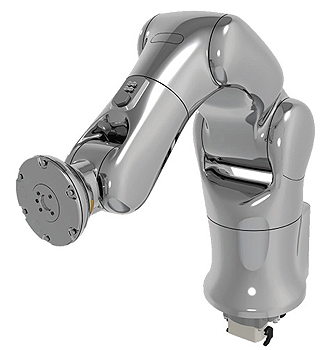- Home » News » Product News
Washable robot targets food and pharma applications

Denso Robotics has announced a washable six-axis robot with a sterilisation-resistant surface that is suitable for use in the pharmaceutical, food, electronics and medical industries. The company has also developed an automated, vision-based feed-control system.
The new VS H2O2/UV robot has a soft, rounded shape with no external screws, thus avoiding build-ups of residue or dirt. Its special surface resists sterilisation techniques based on hydrogen peroxide or ultraviolet light.
All wiring is carried internally to the robot’s 6th axis. This allows grippers and other devices to be connected directly to the robot using a “communication flange” which prevents wires becoming entangled with surrounding equipment, or damage to the robot when cleaning it with chemicals.
“The VS H2O2/UV is ideal for customers with applications such as sorting, portioning, processing and packing”, explains Jürgen Küch, Denso’s senior manager for Europe. He adds that the number of pre-orders demonstrates that customers have been waiting for a robot like this.
The robot’s shiny aluminium surface simplifies cleaning and makes it easy to spot dirt particles. The curved design resists the accumulation of bacteria in hard-to-reach or angled surfaces.
An optional external battery for the robot’s encoders can be placed outside the cleanroom environment, thus avoiding contamination. Another option is an external brake release for the robot’s axes.

Denso will launch the new robot at the Motek trade fair in Germany in October, along with an automated feeding system consisting of a vision camera and a robot operated via Denso’s RC8 robot controller – claimed to be the smallest in the 3kW class.
The system, called Eyefeeder, consists of a part feeder, the camera and the robot. Products on the conveyor are transported into the vision system’s recognition area. If they are correctly positioned, the system transmits the coordinates to the robot controller, allowing the robot to grab them. If the products are out of position, the camera system tells the controller that the products will have to be moved before the robot can pick them up. The part-feeder’s motors are powered by directly the robot controller.
The Eyefeeder is suitable for parts up to 250mm, weighing up to 300g. It can be used with four- or six-axis robots, depending on whether pick-and-place or assembly operations are needed. The robot controller determines the conveyor speed and joggling intensity.





